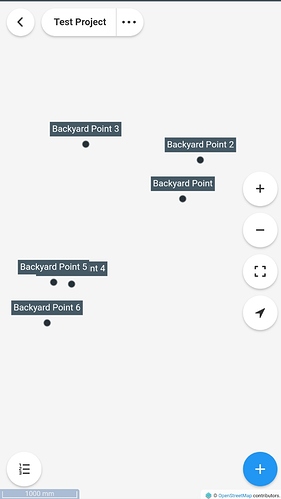Here’s a quick scenario if you have (2) Reach RS or RS+ using LoRa (you can do the same with M+ if you also obtain the LoRa module option for each M+).
Set (1) Reach RS/RS+ as the BASE on a known point (either from a public record or one by a surveyor). I.e. you have the coordinates and the ellipsoid height which you manually enter in base mode in ReachView. (Also your antenna height (ground point up to bottom of receiver plus 65mm)) The accuracy will be as good as it will get in this case for the BASE portion.
Now when you use the other RS/RS+ as your ROVER via LoRa, you will get cm accuracy between the BASE and ROVER.
Now let’s say you do NOT have a KNOWN POINT. Like @RTK_Hunter mentioned, do you need ABSOLUTE accuracy as the scenario above, or do you just need RELATIVE accuracy which is next without a known point to set base on.
For relative accuracy (in relation to the BASE). You would basically be creating your OWN “personal” known point for your base you could revisit later for your cm accurate ROVER to work from. It’s (the base location) nothing accurate in surveyor’s terms but accurate enough for you locally and your project between base and rover.
So what happens here when working relatively, is the base has to approximate best it can by itself first, “autonomously” or AVERAGE SINGLE mode for a few to several minutes. Now, this will only be accurate to about 2.5m. The coordinates and ellipsoid height it derives “best it can autonomously” will NOT be cm accurate but meter accurate bouncing around in a 2.5m or so area, not within a cm accurate area. The BASE ONLY. Mark the point below the base physically to revisit / set base on later. Make a note of the coordinates and ellipsoid and manually save them in the base mode settings. Note the antenna height will be 0 doing this. (Antenna height (ground to bottom of receiver plus 65mm) only comes into place when you use a known published or surveyor point).
Now here is the good part i think your concerned about. While the ROVER is receiving corrections from the BASE relatively, you will have cm accuracy between the BASE and ROVER. The baseline is the distance between them. Now if clear sky view etc, FIXED solution, and lets say you placed the base and rover for testing 5m exactly apart, your baseline will reflect that within cm accuracy.
Keep in mind that your base is still sitting somewhere within 2.5m accuracy though, not exactly on a published or surveyed point, so all your grouped cm accurate points collected (between base and rover only) will be offset or shifted in relation to the base. If later you obtain an accurate known point if you needed absolute accuracy, you can shift them later or correct them in cad software etc. But as @RTK_Hunter mentioned, that is the question, do you need your final work to be absolute or will relative suffice?
Either way, you will have cm accuracy between base and rover. You will have this also if based on absolute known published/surveyor point. You will have cm accuracy if the base derived it’s own coordinates autonomously (average single within 2.5m), BUT the rover will be offsetted or shifted relative.
If you use only (1) RS/RS+ you will only get 2.5m accuracy (unless you use NTRIP to a CORS station which is like using someone else’s base and now your base becomes the rover for cm accuracy via RTK)
Once you add that 2nd Reach RS/RS+ as a ROVER, then you get cm accuracy via RTK.
Keep in mind that the new RS2 will help here when in area that has foliage etc where the single L1 frequency Reach RS/RS+ will lose FIX quickly. Personally i feel these are only good in open clear skyview working environments… how often is that… so the RS2 is the best choice for serious work now that it is a reality. I.e. purchase (2) using LoRa or (1) using NTRIP CORS (as long as a CORS station within max range and you have internet access via cell etc) for cm accuracy. Best choice for more options (2) RS2.




